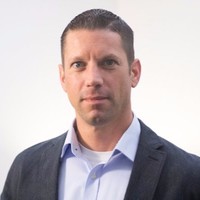Episode 153: Jeff Depa on Enablement’s Role in Driving Consistent Rep Performance
5.3K Views | 19 Min Read
Shawnna Sumaoang: Hi, and welcome to the Sales Enablement PRO podcast, I’m Shawnna Sumaoang. Sales enablement is a constantly evolving space, and we’re here to help professionals stay up to date on the latest trends and best practices so that they can be more effective in their jobs.
Today, I’m excited to have Jeff Depa from Gainsight join us. Jeff, I would love for you to introduce yourself, your role, and your organization to our audience.
Jeff Depa: Thank you, it’s great to be here. I can give you just a 50,000-foot overview on me. I began my professional career as a developer and moved through professional services to a number of different go-to-market functions at both large organizations and startups. I have been a CRO for the past six years now, and the past six months have been at Gainsight.
That means I’m accountable for our overall go-to-market and our revenue performance as a whole. For those not familiar, Gainsight really is the customer success market leader and category creator. As the economy continues to transition to subscription and consumption-based business models, it’s really, really critical for businesses to be able to enable their product adoption to optimize their customer experience and to drive outcomes, but ultimately to retain and expand. We offer a platform that provides the analytics, the actionable insights, and really the tooling to support the entire customer life cycle in that regard.
Just to size us a little bit, we raised over a hundred million in recurring revenue last fiscal year, we are global. The majority of our revenue sits in North America, but we have a large presence in Europe and a growing presence in APAC. What I would think is a fairly standard segmentation in terms of a large focus on enterprise verticals team, we’ve got a mid-market organization and I’ve got an account management team as well as your supporting cast of SDRs, SEs, and a business development team in the field.
SS: Well, that is an impressive go-to-market team, and on LinkedIn you actually described yourself as being an architect of GTM teams. As a revenue leader, how do you approach building GTM teams or go-to-market teams to drive hypergrowth?
JD: I think the question is how much time you have. It really starts with a deep understanding of your market, your value proposition, and particularly your buyer’s ideal customer profile or ICP. There are companies out there today that are lucky enough to be a product like growth play. Can you rely on a viral spread of your product and your brand, or do you need a growth plus sales approach? That’s particularly important in the enterprise and the mid-market space. I spent the bulk of my career in that large-scale enterprise technology, and ultimately, I think it comes down to what outcomes can you go create in your client’s business. Creating those outcomes requires a fairly detailed understanding of your strategy, how you operate, and how you execute.
There’s a framework that I like to use where there are about seven key areas that you need to be able to dig into to go build that go-to-market framework. The first is really understanding your product and the value drivers. What are your key features? More importantly, what are the key value drivers and outcomes that you can go create? How do you then align to the market? How do you segment that market? What are the personas? What are the verticals? What are the needs and behaviors of your potential customers by segment?
From there, you can move on to what’s your messaging? What is that unique value proposition and ultimately, what is that positive business outcome that you can go create in your customer’s business? When you know that, you can move on to coverage. How do I build my sales team? How do I cover that market based on portfolio potential? What are the roles and skills of different types of sales resources, whether it’s hunters or farmers or lands and expands? Oftentimes you need to augment that with channels. I think especially in the enterprise space, having a really focused channel strategy, where you understand the architecture and economics of your partners and how you build a bigger addressable market together is key. On top of that, you need to layer sales process. If we’re going to effectively execute at scale, there needs to be a cadence, there needs to be a level of operational support and process so people know what to expect and people can communicate effectively.
Finally, it all comes together with competence centers. Sending the right quotas and targets and having the appropriate visibility for the team as to where they stand. You layer that on top of a foundation. I like to call it my air dashboards, which is activities, indicators, and results. When you tie all that together, you can structure a really powerful framework where you are checking the box of really everything you need to think about to go bring a product or a solution to market.
SS: I bet, and I imagine enablement plays a significant role in a lot of those components. From your perspective, what role does enablement play in helping those go-to-market teams sustain hypergrowth?
JD: Enablement is really a key aspect of it. In fact, as I mentioned, I’m roughly six months into Gainsight and when I did the assessment of what we needed to either shore up or invest in to get to the next level of revenue as a company, enablement is one of those key functions. You cannot systematically execute at scale if you don’t have an ability to go arm and equip your team. And that’s everything from content and messaging all the way down to tools and baselining how you expect the knowledge to be both deployed and leveraged by your sales organization.
My enablement team here, we’ve actually just hired and added a few folks into the organization. We are launching our first inaugural bootcamps, which I think is really, really important as you’re growing a sales organization to actually have a consistent manner to go onboard folks, putting them through a process where they can understand everything from the customer to why we even exist. Why is there a problem in the marketplace and how are we uniquely positioned to go solve that? But doing it in a way that’s repeatable and allows you to get some consistency in your business.
I’ve worked in organizations in the past that haven’t really focused on enablement, and oftentimes you bring a new hire to the company, you give them a laptop, you give them a pat on the back and say have fun. You get very, very different results when you do that. You have some folks that can come in as high performers and kind of navigate their way, but more often than not, you get really inconsistent performance. This is why when you go look at things like sales productivity, you will see the haves and have-nots, you’ll see reps that are blowing it out every quarter, and you’ll see others that aren’t. Or you see one quarter of great performance and three quarters of incredibly poor performance. Oftentimes it comes down to, have we consistently enabled the team? It requires the rep, and it requires your field team to take it the last 20, 30%, but that core 70, 80% of content messaging, knowledge, value prop, all of that needs to be tied together and really institutionalized by your enablement team.
You can’t do that with enablement alone. It requires having a solid foundation and things like your PMM organization, your product marketing organization, the marketing team having that cross-functional organization that supports how the entire company coalesces and goes to market is really, really important.
SS: Absolutely. Now, one component of that is culture. Organizations like Gainsight that are experiencing hypergrowth might come across an issue where there can be turbulence in culture or sustaining a positive culture, particularly amongst the sales team.
I’d love your advice. How can revenue leaders help to sustain a healthy culture as organizations grow? And how do you see enablement’s role in supporting that?
JD: Values and culture are absolutely key. I’ll tell you I literally just got off another call before I joined this one and it was a fireside chat with all of our new hires and bootcamp. I spent probably 30 minutes talking about Gainsight values. This is something that a lot of companies talk about, but I will say, and obviously I’m a big fan of Gainsight because I work here, this is one of the few places I’ve seen or worked in my career that actually takes them to heart and lives them on a day-by-day basis. They are more than a poster up in your break room.
We’ve got a couple of core values. The golden rule, we believe in treating everyone the way in which you’d want to be treated. Another is success for all, meaning a really critical pursuit of balancing the success for our customers, for our teammates, for our families, for our investors. A third value is childlike joy. This is one that you can go search some YouTube videos on Gainsight and you will see the different rap songs that we put out. I actually dressed up in the orange tuxedo from Dumb and Dumber as part of our revenue kickoff this year. But bringing that inner child and that joy to work every day, it just makes it a fun place to work. Shoshin is another value we have. It’s about beginner’s mind, and this is really important across the company. Every time you approach a problem, have that beginner’s mind, be able to go ask the five why’s instead of just jumping to the conclusion as to here’s what I think we need to go do. And then finally, the last one that’s important for us is called stay thirsty. We believe in a really internally driven strive for greatness.
All of these values, they comprise the core DNA of your culture. This is something that, A: you need to hire for it. When we go through the hiring process, we score everyone on their ability to be a cultural match to our values. How much they exhibit our values, and can they do that? B: you need to deliver, like I’ve talked across the board, it’s up to every executive to really be a key leader and demonstrate how these values matter. And you can’t tolerate behavior that goes against that. Oftentimes, things will get brushed under the rug, but you need to go address that head-on because otherwise you’re not truly living your values.
Finally, I’ll say this, especially with regard to enablement and values, there’s this old adage: when you scale a sales organization, hire the masses, put them in classes. Then there’s the last part of it that I won’t say because it’s a bit off color, but the reality is it can’t just be about pushing people through a system, you’ve got to make it fun. You have to support the team’s ability to achieve. Designing your enablement programs with your field organization as the customer is key. Is your PMM team, is your competitive intelligence team, is your marketing team thinking about how the sales rep can use this. How is an SE going to go leverage this and drive value in a customer environment?
If you’re not thinking about that, it tends to fall rather flat, and they become artifacts that go up in whatever your content management system is, and they’re not used. To me, it’s key to have that embedded across everything you do from a culture perspective.
SS: Absolutely, I couldn’t agree more. Now, you also receive a lot of praise from your peers for your coaching skills. Given your experience as a successful coach, I’d love to understand, what are some ways that enablement can help sales and revenue leaders like yourself effectively coach their teams?
JD: I think first and foremost, we need to recognize that coaching is a behavior, It’s not a task. It’s not hey, I need to go check this box, I need to go coach my team. It’s how we approach and engage with our team. Again, enablement treating the field as their customer and taking that coaching mindset into account with everything that they produce in every engagement we have is really critical.
You need to think about, especially as a sales leader, but even importantly as an enablement leader, how do I remove obstacles? How do I help my team reframe the problem to potentially see it in a new way, ultimately, that will allow them to create more value for their customers? How do we understand the motivations of the team?
It’s not easy, especially in a field organization. “Everything is easy, it’s money.” It’s not. There’s more to it than that. There’s recognition, there’s that tangible sense of accomplishment, building and designing your programs where you can understand there’s motivators and engage with your team. It’s really key.
A couple last ones are focusing on people’s strengths. There’s an old, you know, whether you’re in football and coaching, they talk about it’s the players not the plays. The reality is it’s both. You have to understand the strengths of the people within your organization and put them in positions to be successful. That’s really what coaching is about, and your enablement team can really help you do that as you architect, both your bootcamps and then your ongoing training. We have a sales academy here where we launch new content and processes as part of almost like a product manager type of launch. All that has to be taken into account.
Then, finally, know when and where to go provide feedback. You have to have a constant mechanism for that feedback so that people expect it, but also that they want, and they welcome it. If it’s of the guise of removing obstacles and helping them go drive the things that are important to them and their business, such as increasing selling time, giving them more at-bats, things like that, all of those become really key.
SS: Fantastic, this has been a fantastic conversation. Jeff, I have one last question for you. I always like to round out our podcasts on this particular topic, but particularly from you and your revenue perspective, how can sales enablement really maximize its business impact? You mentioned AIR earlier, but what are some of the key metrics that you look at to measure the success of enablement’s efforts?
JD: I’ll give you a consulting answer. It depends on where you’re at in your journey and actually having a fully built out enablement function. There’s a number of different metrics you should look at. Obviously at the top level, once you’re in that sustained steady-state, you’re looking at things like productivity and yield across the organization. Supporting resource yield, so if I’m doing a great job enabling my team, I theoretically should be able to get to really industry best in class standards when it comes to perhaps SE and rep ratios, things like that.
But other things that you look at, I just mentioned one, increase selling time. The ability that we can make people so good at what they do, and we can support them as a tool, as a process. Having the right artifact at the right time with the right tools behind them just gives them more selling time and allows them to be more productive. Measuring that selling time is key. Time to first deal, so not just when am I a fully ramped and productive rep, but how quickly can we get you out there and can get you closing opportunities is another good metric to go track.
Then longer term, one of the other ones that I’ve looked at over time is the actual sales cycle. If we do a good job of truly enabling the team and more importantly, aligning to the buyer’s journey, we should be able to go accelerate that sales cycle because we understand the challenges our buyers are facing and we are optimizing artifacts and messaging to help them through that process, which ultimately should lead to quicker deal cycles.
SS: I appreciate this so much, Jeff, I’ve learned so much from you. Thank you again for your time today.
JD: Awesome. I really appreciate being here. Thank you.
SS: To our audience, thanks for listening. For more insights, tips, and expertise from sales enablement leaders, visit salesenablement.pro. If there’s something you’d like to share or a topic you’d like to learn more about, please let us know. We’d love to hear from you.












